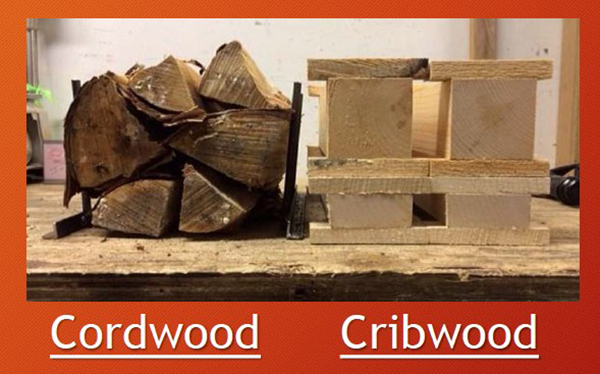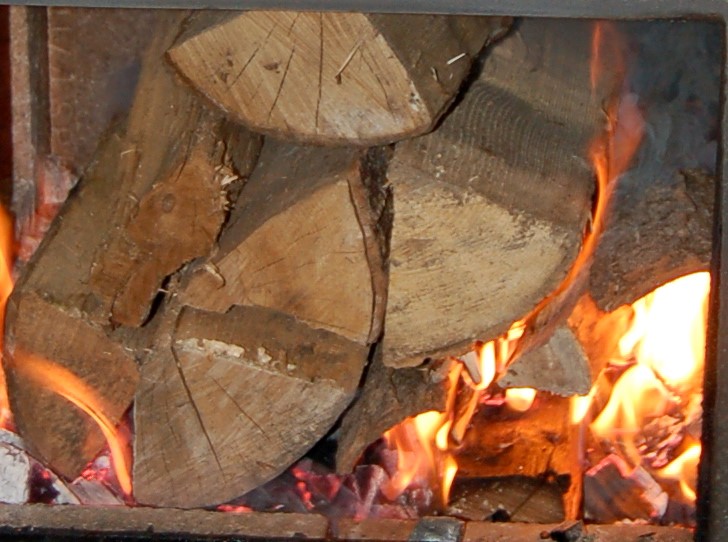The shift from crib wood testing to representative cordwood testing is an important step in improving wood stove efficiency for the future.
The Environmental Protection Agency has extremely rigid testing requirements for wood stoves. These have changed over the years and influence the wood stoves being manufactured in 2024. Let’s dive into the Environmental Protection Agency’s (EPA) emissions testing standards for wood stoves to better understand the difference between crib wood and cordwood. We will also look at the evolution of these standards from their inception in 1988 through significant revisions, culminating in the latest Step 2 Standards, effective from May 15, 2020.

Introduction to EPA Emissions Testing for Wood Stoves
The Environmental Protection Agency (EPA) emissions testing for wood stoves is designed to ensure that wood stoves sold in the United States meet specific air quality standards to reduce air pollution and protect public health. The testing procedures and standards have evolved over the years, with the most recent updates being called Phase IV or the “Step 2 Standards” of the New Source Performance Standards (NSPS) for Residential Wood Heaters, which came into effect on May 15, 2020.
The Evolution of EPA Emissions Testing
EPA emissions testing for wood stoves began in 1988 when the EPA first issued standards for wood stoves to address concerns about air pollution. The original standards required non-catalytic wood stoves to emit no more than 7.5 grams of particulate matter per hour and catalytic wood stoves to emit no more than 4.1 grams per hour. These standards have been updated several times, with the most significant revision occurring in 2015 when the EPA introduced a two-step process to further reduce emissions. The Step 1 Standards required stoves to emit no more than 4.5 grams of particulate matter per hour, with the Step 2 Standards in 2020 tightening this to 2.0 grams per hour for crib wood and 2.5 grams per hour for cordwood.

Phase 4 and Crib Wood Versus Cord Wood Testing
Under the latest standards, known as Phase IV or the Step 2 Standards, wood stoves must now meet more stringent requirements. One change is the move towards testing with cord wood instead of crib wood. Historically, the EPA’s testing protocol used crib wood—uniformly sized and spaced pieces of wood that create a consistent and repeatable burn for testing purposes. While crib wood testing provides a controlled environment for emissions testing, it does not accurately represent how stoves are used in homes. Cord wood, which varies in size, moisture content, and type of wood, is commonly used.
Cord wood testing aims to reflect more accurately the real-world conditions under which wood stoves operate. You don’t actually burn crib wood in real life, cord wood is standard wood, the stuff real people use. Cord wood is expected to provide more realistic emissions data and help consumers make better-informed decisions about their wood stove purchases. This shift acknowledges that the way wood is burned in stoves can significantly impact emissions, and the type of wood, along with how it is loaded and burned, plays a critical role in the amount of pollution a stove produces.

There are a number of great resources about this topic, “Are Cord Wood Stoves Going Away” involves Chris Neufeld of BlazeKing discussing the future of wood burning in America. Regency Fireplaces also has a great article, “Cord Wood vs Crib Wood Testing” on this topic that dives more into the efficiency numbers in more detail. EPA Certification Tests from NESCAUM is also a wonderful resource when discussing wood stove efficiency testing.
Implementation and Impact of EPA Encouraging Cord Wood Testing
The transition to cord wood testing has implications for manufacturers, consumers, and regulators. Manufacturers must adapt their designs to meet the new standards under real-world conditions. Consumers benefit from more efficient, cleaner-burning stoves that reduce air pollution.
The implementation of Phase IV and the move to cord wood testing represent a significant step forward in reducing the environmental impact of wood stoves. By addressing the real-world usage of wood stoves, the EPA aims to ensure that advancements in stove technology translate into tangible environmental and health benefits. The ongoing evolution of emissions testing standards reflects a commitment to improving air quality while recognizing the practical aspects of wood stove use in American homes.
